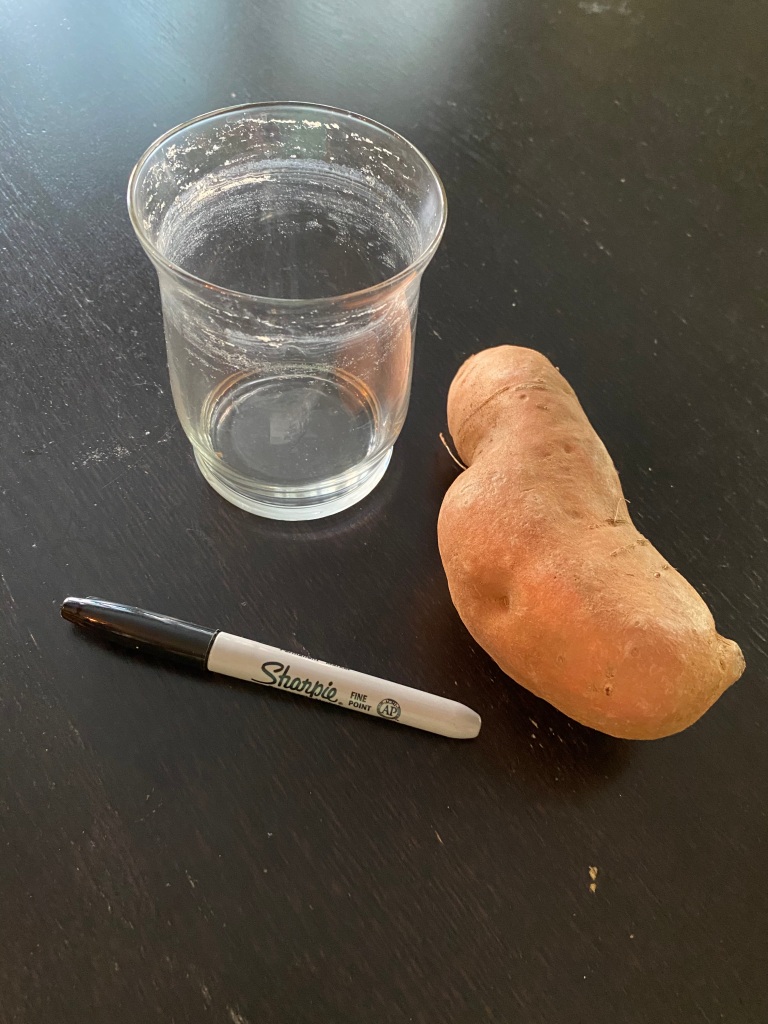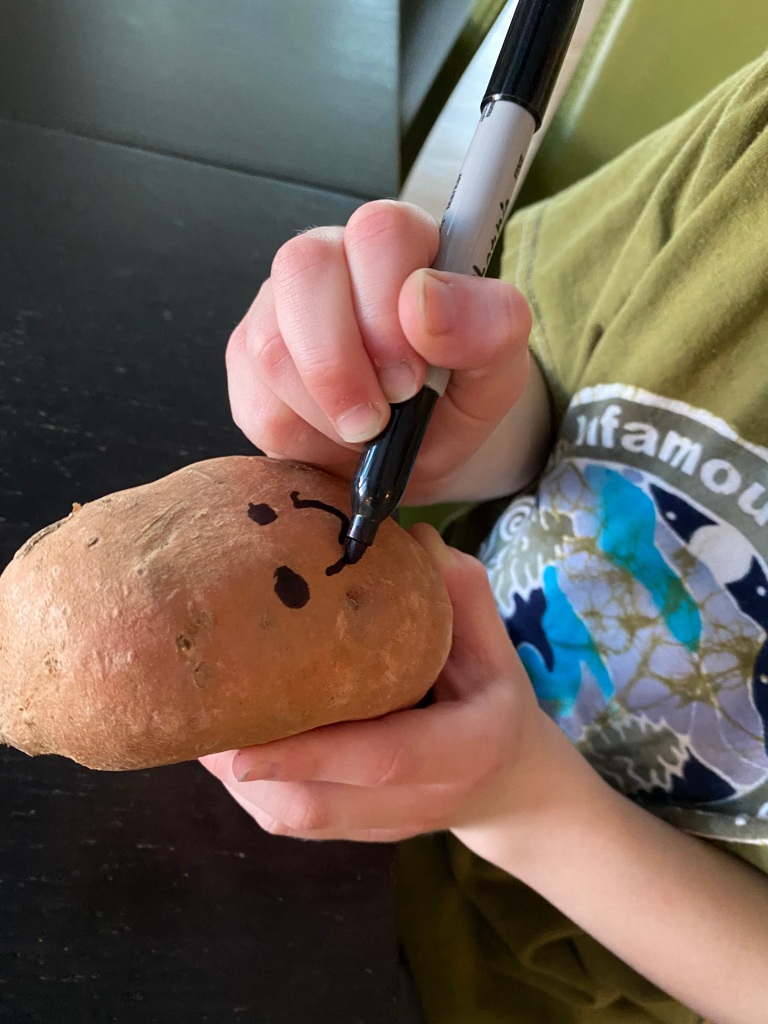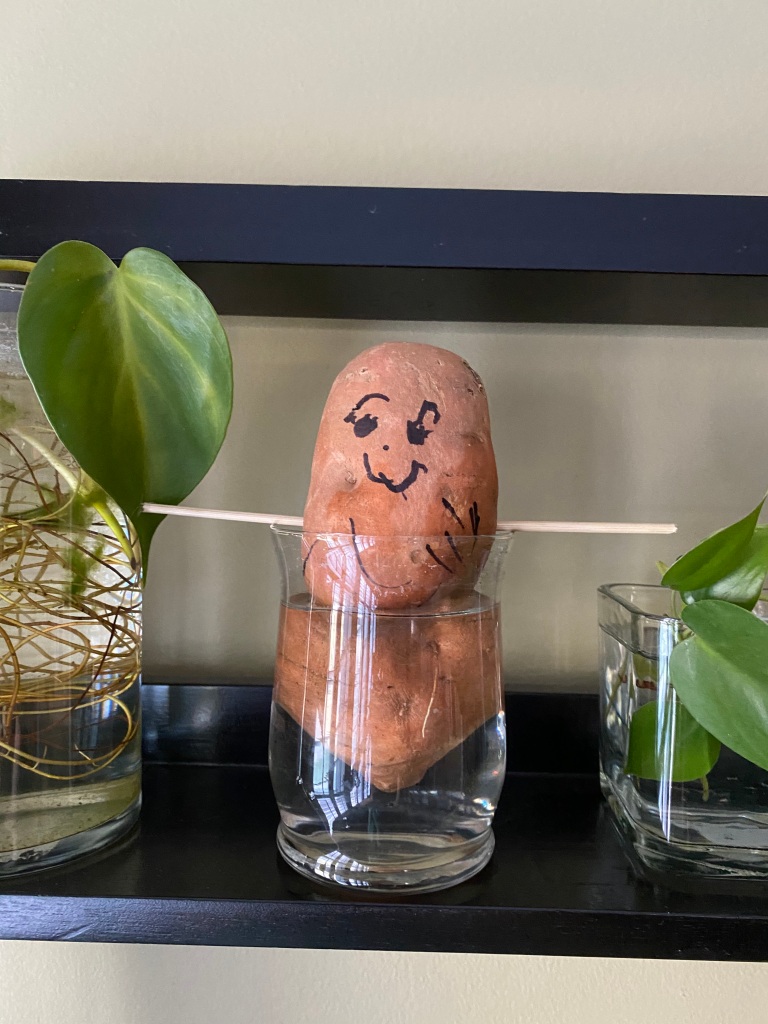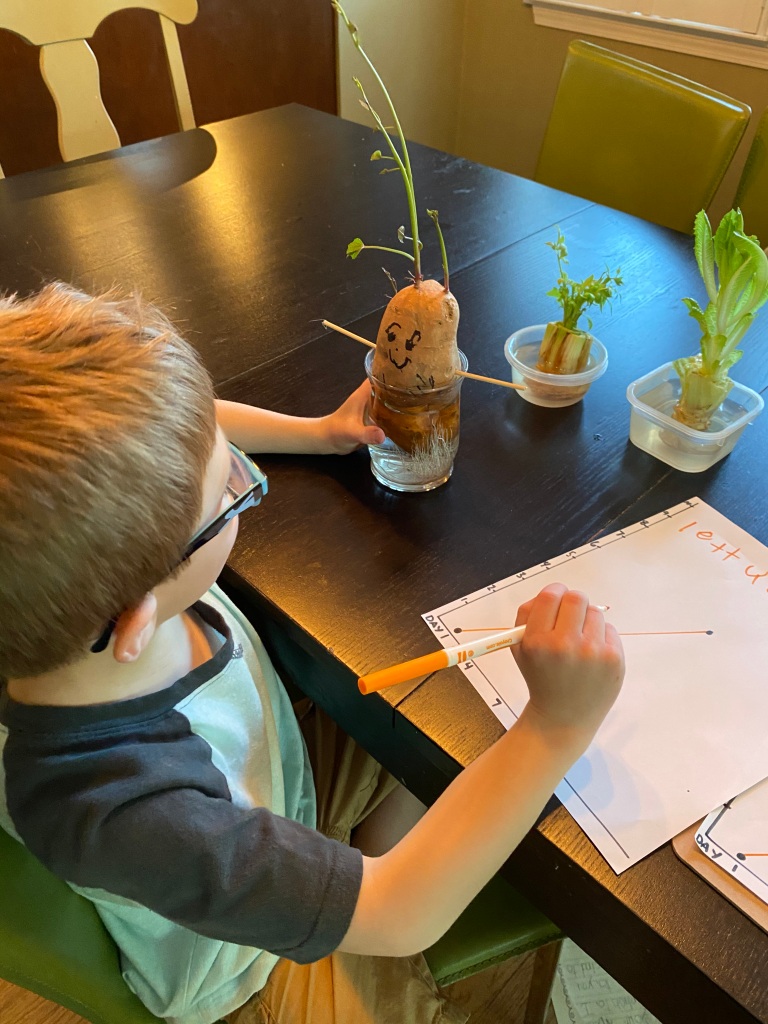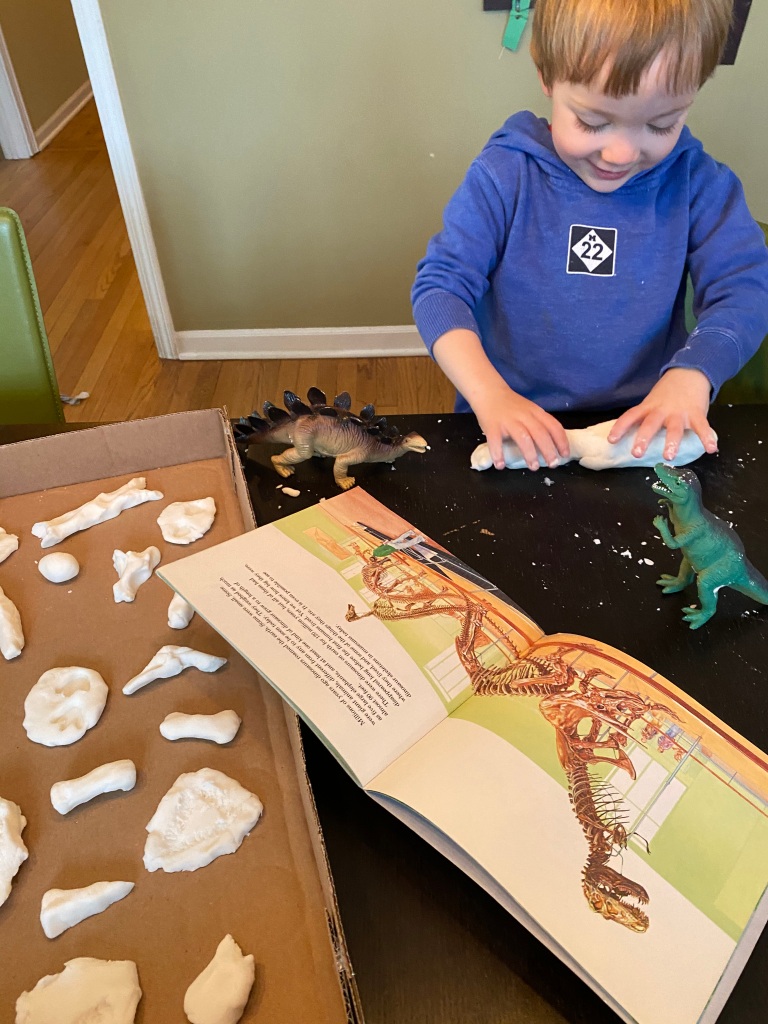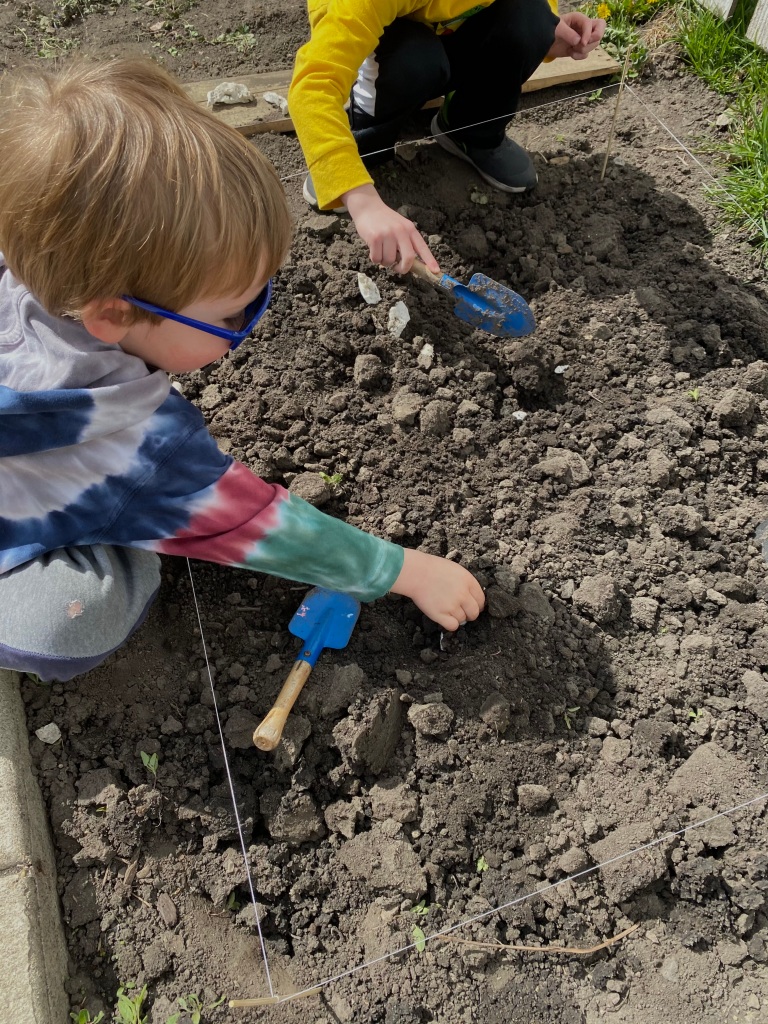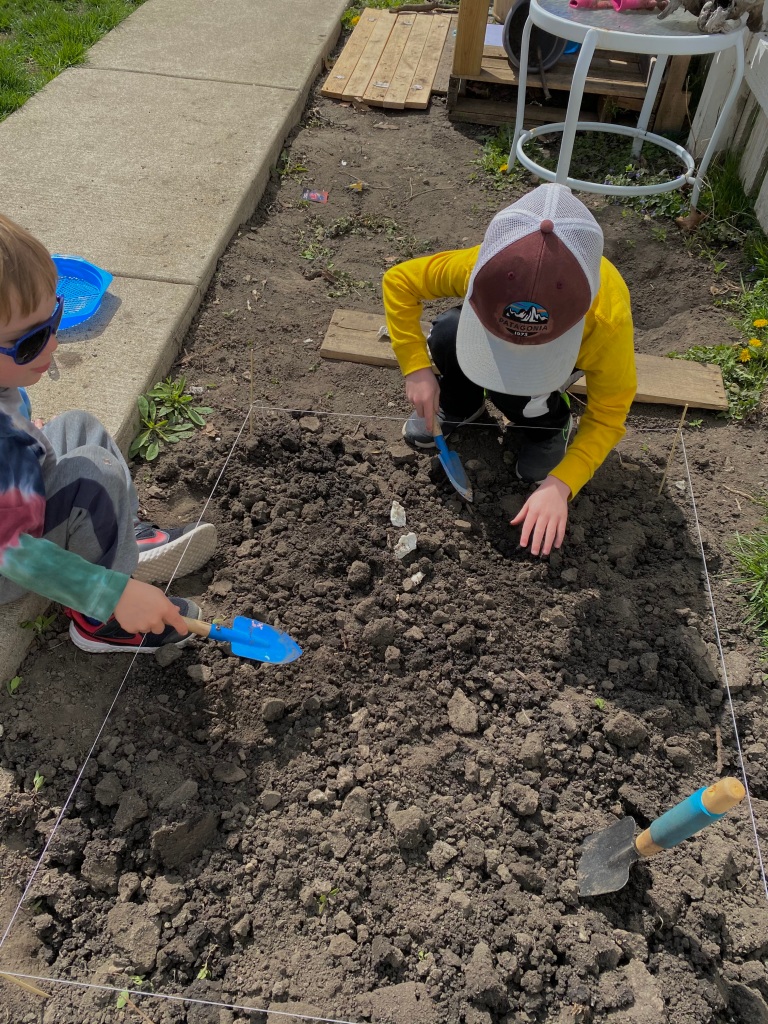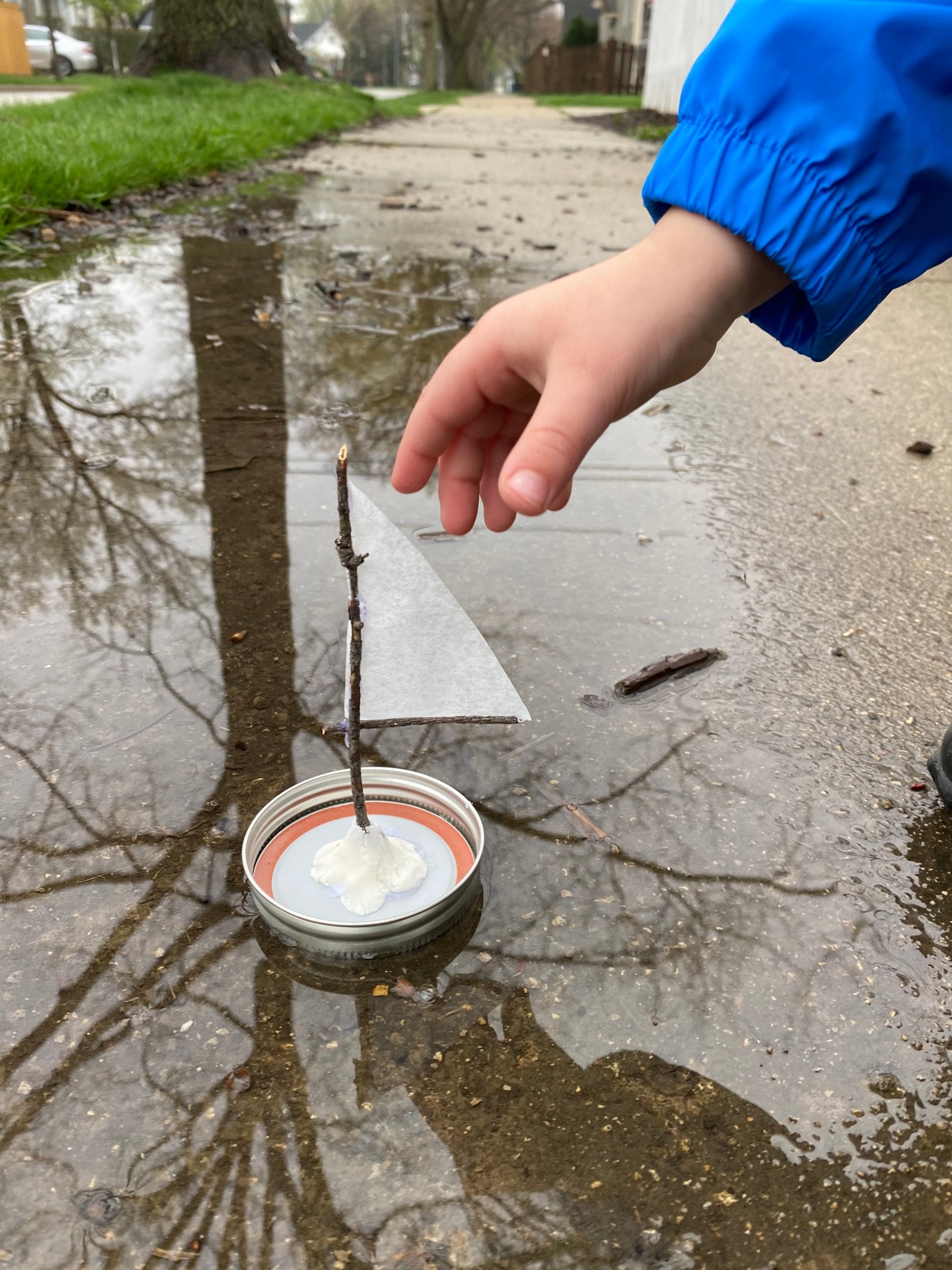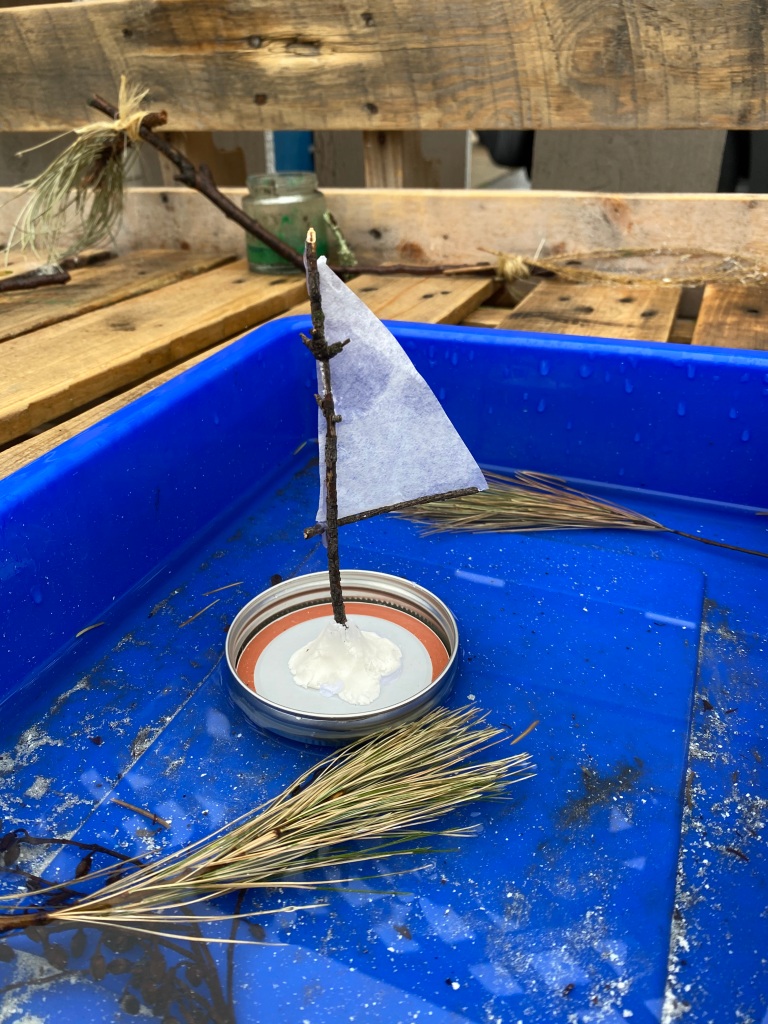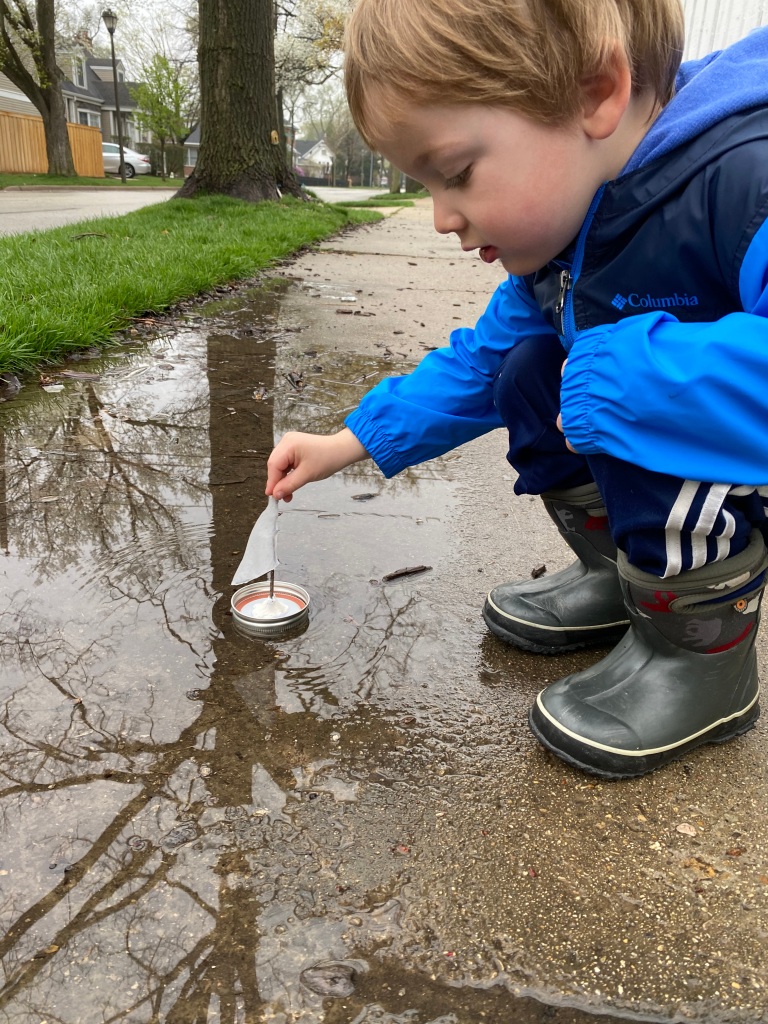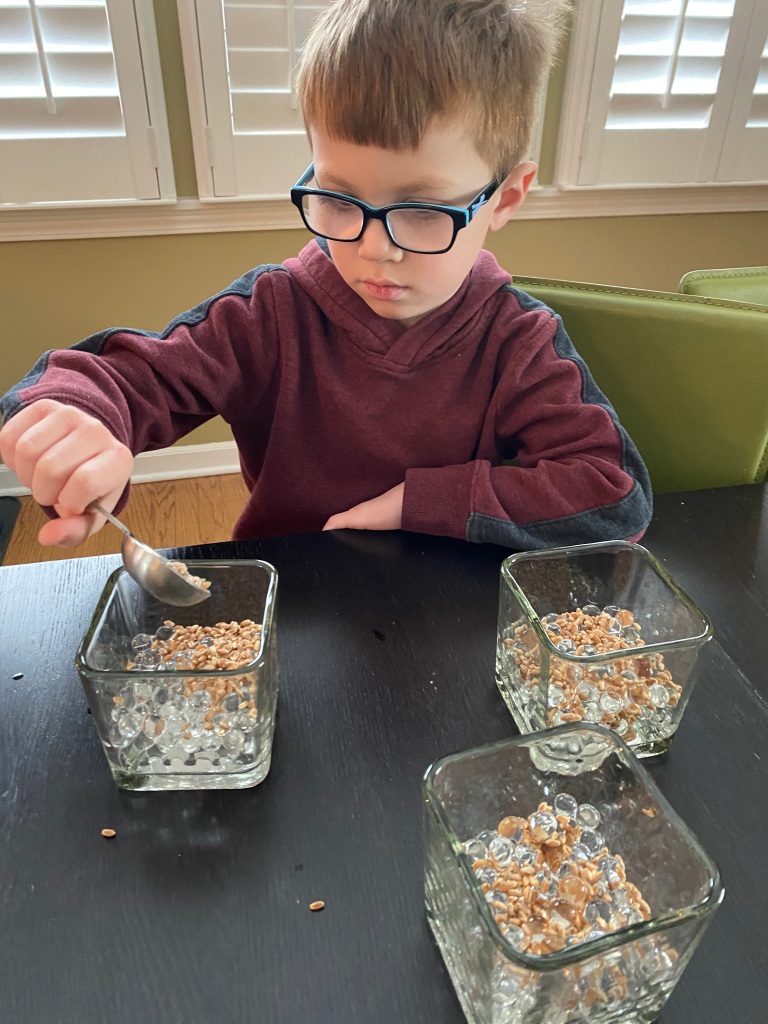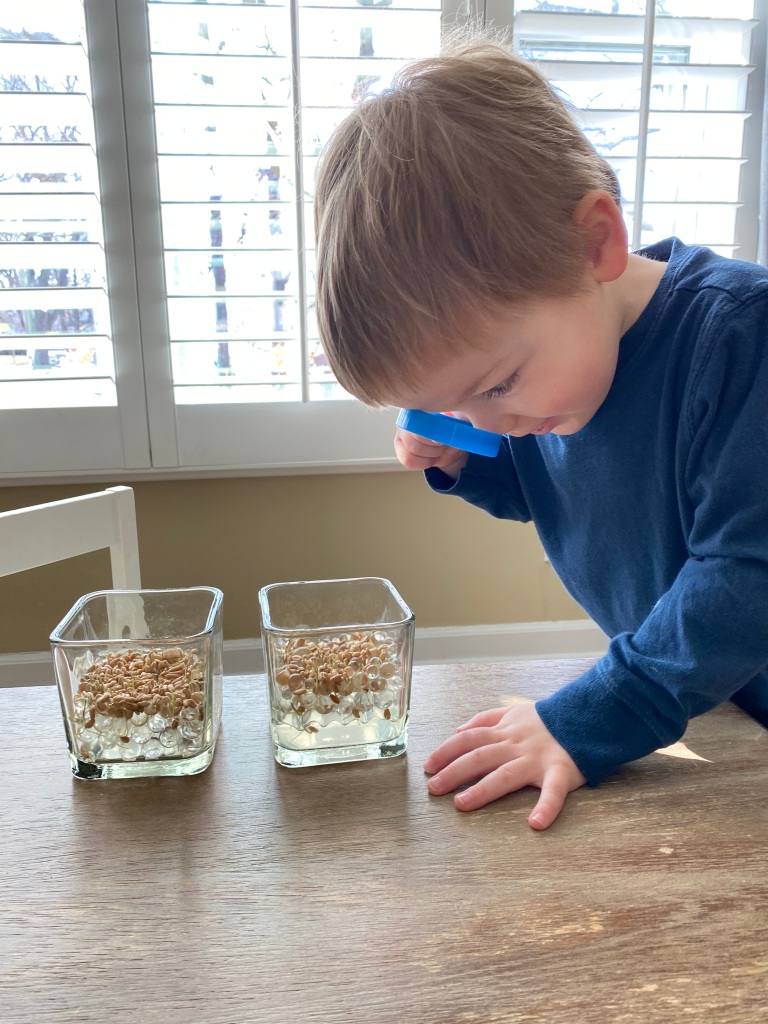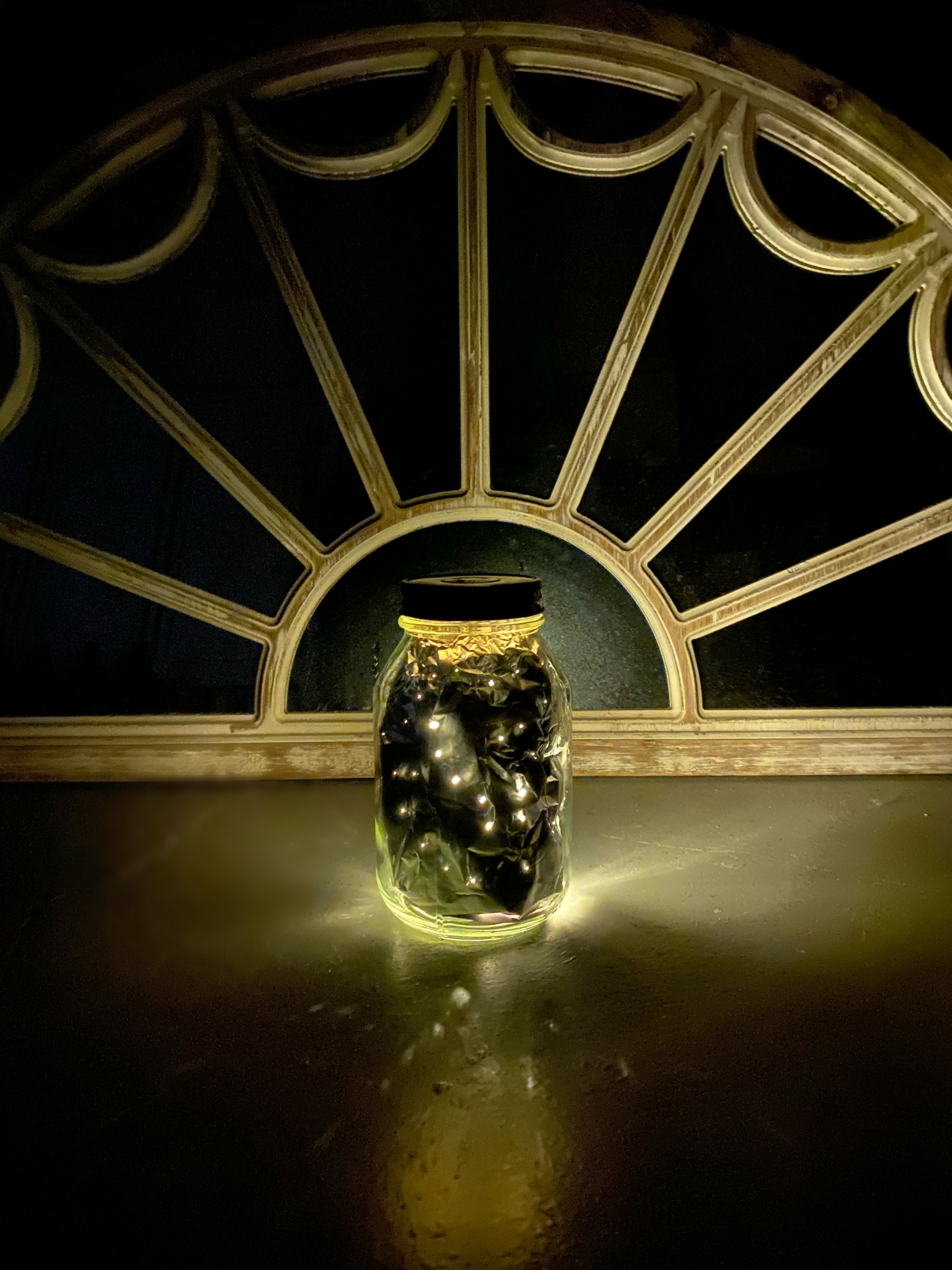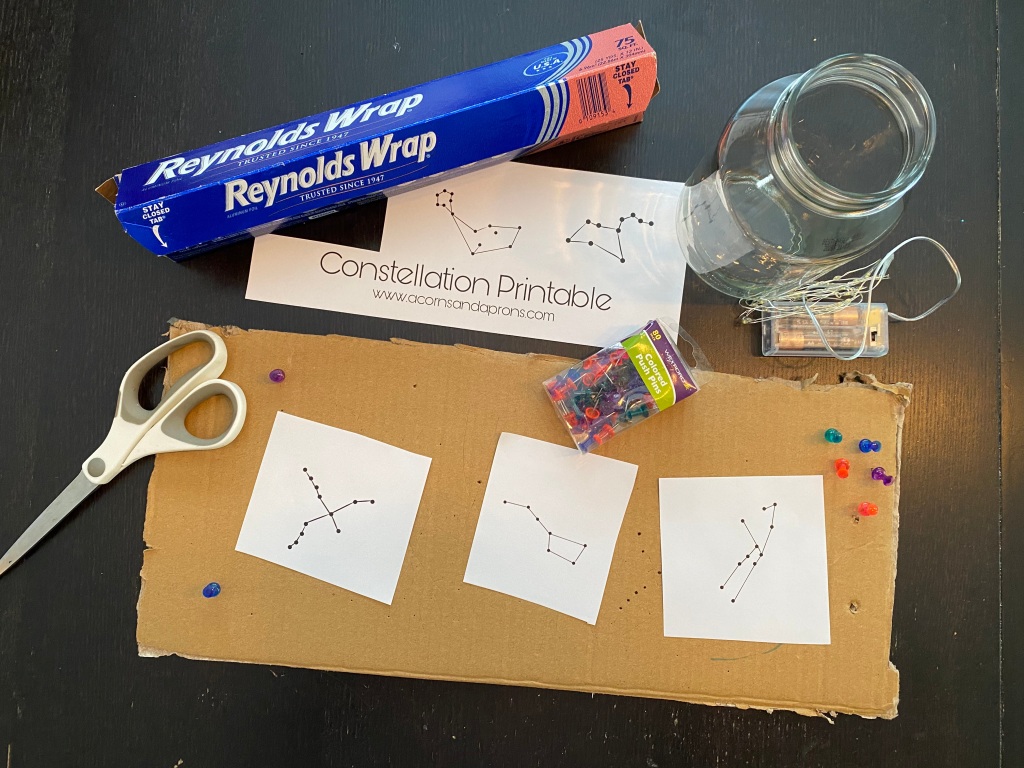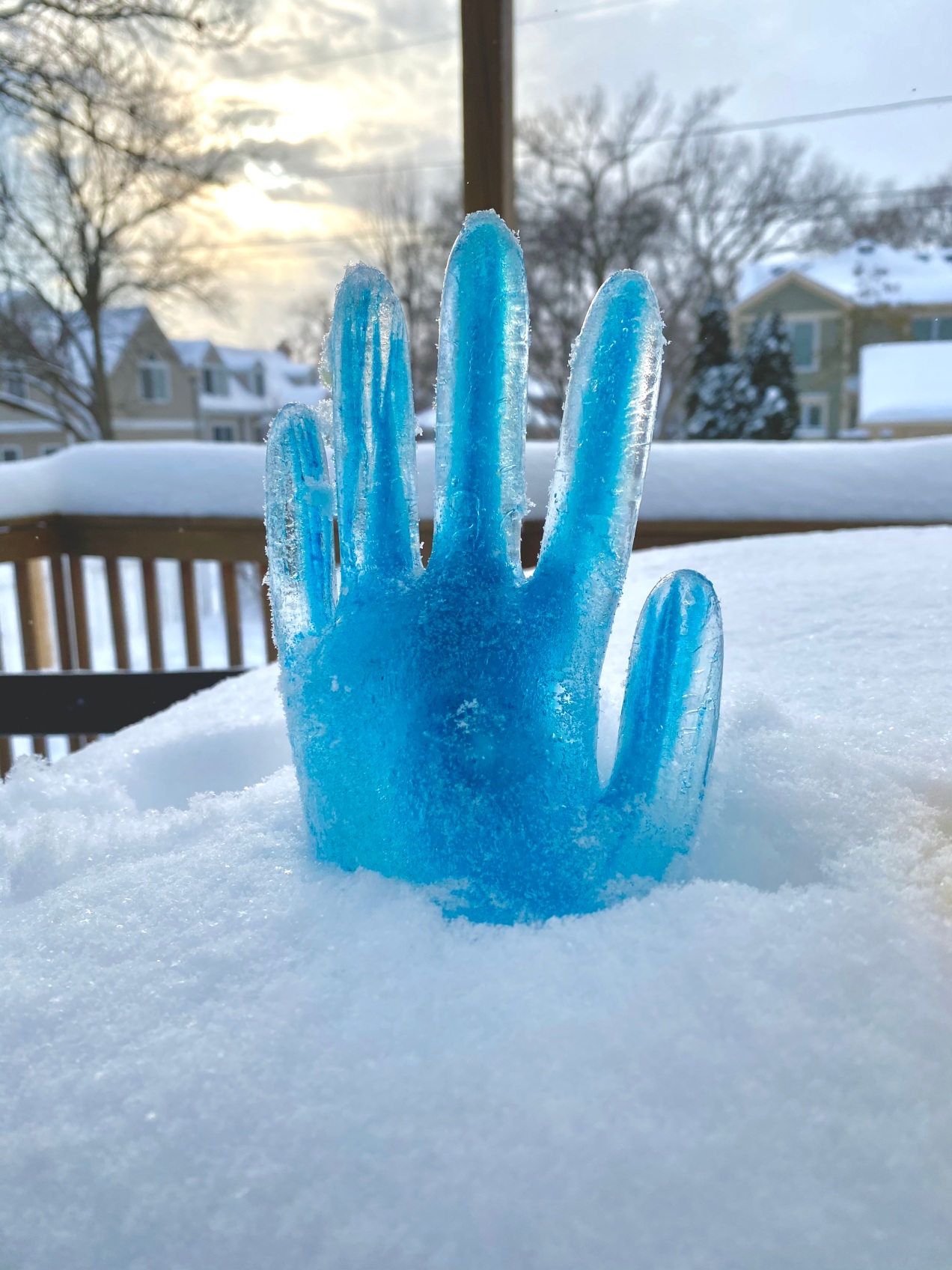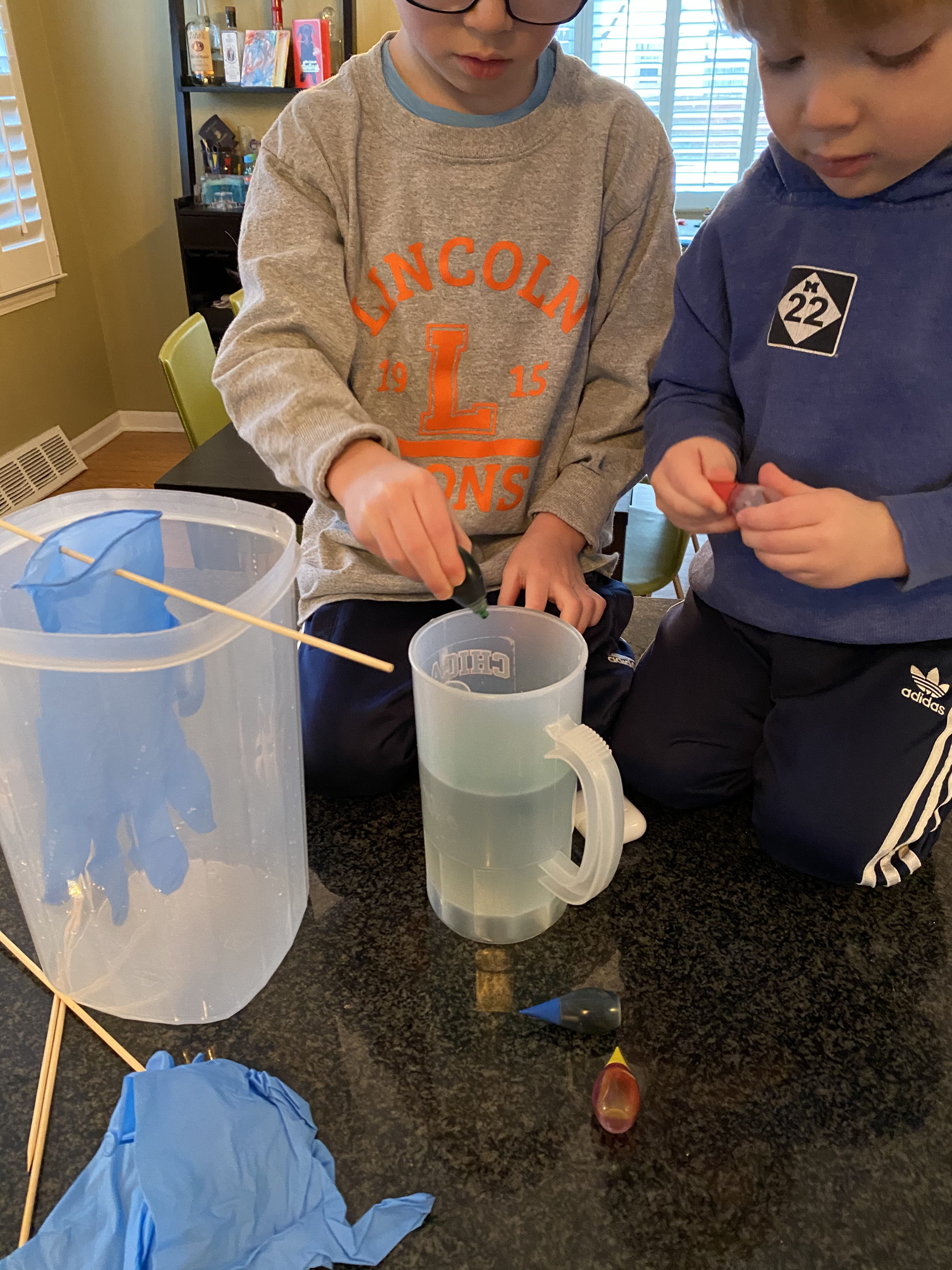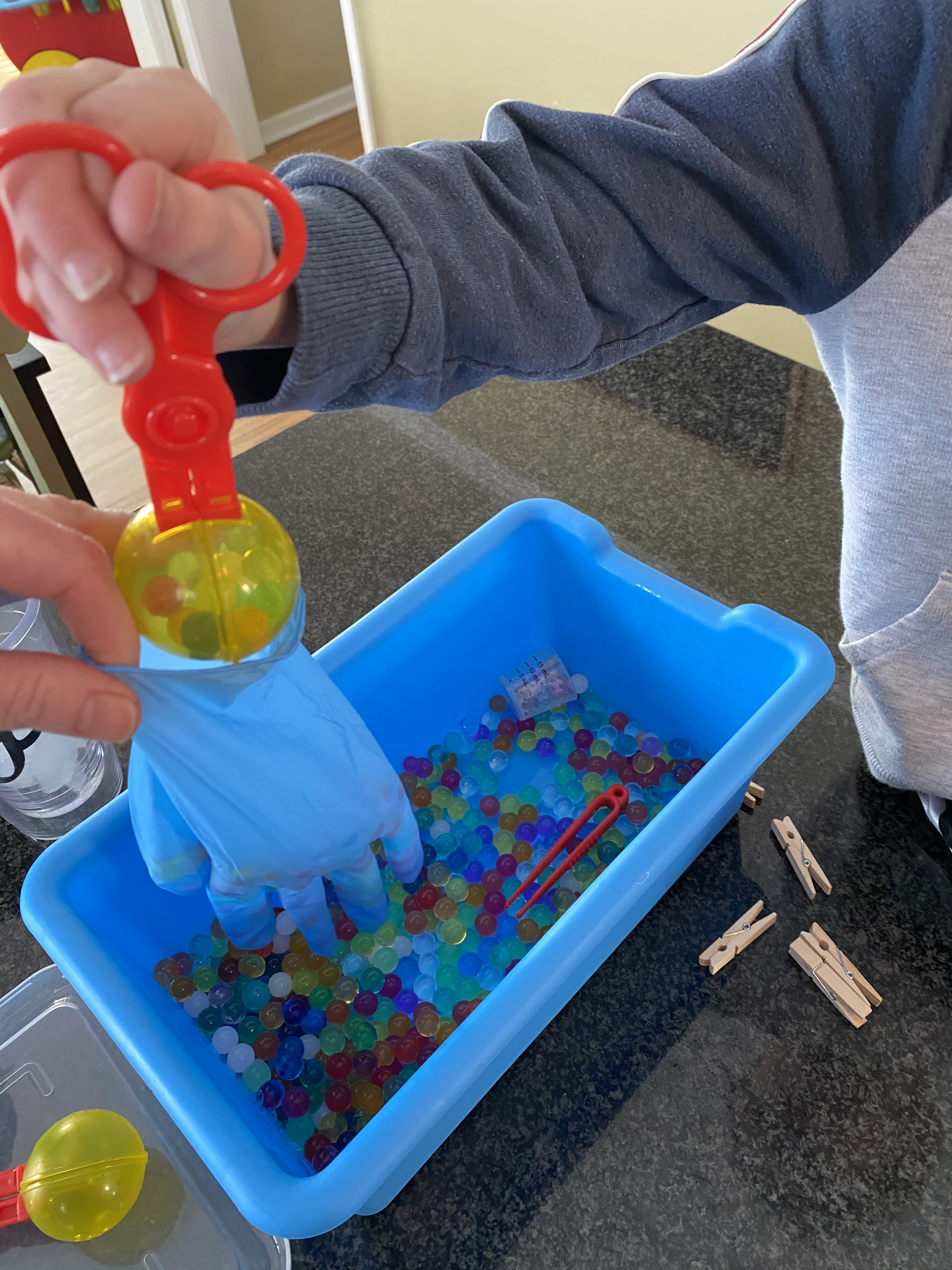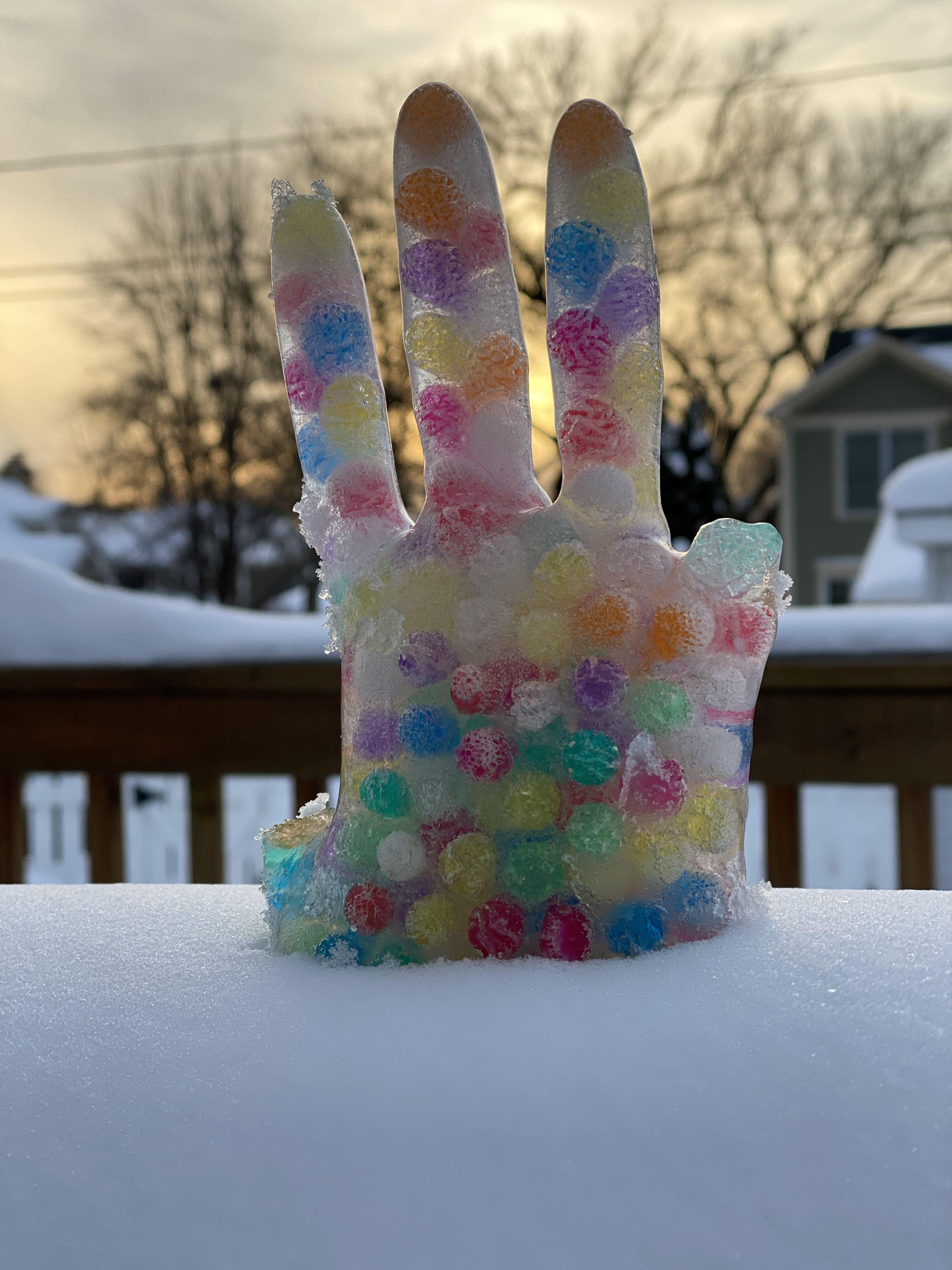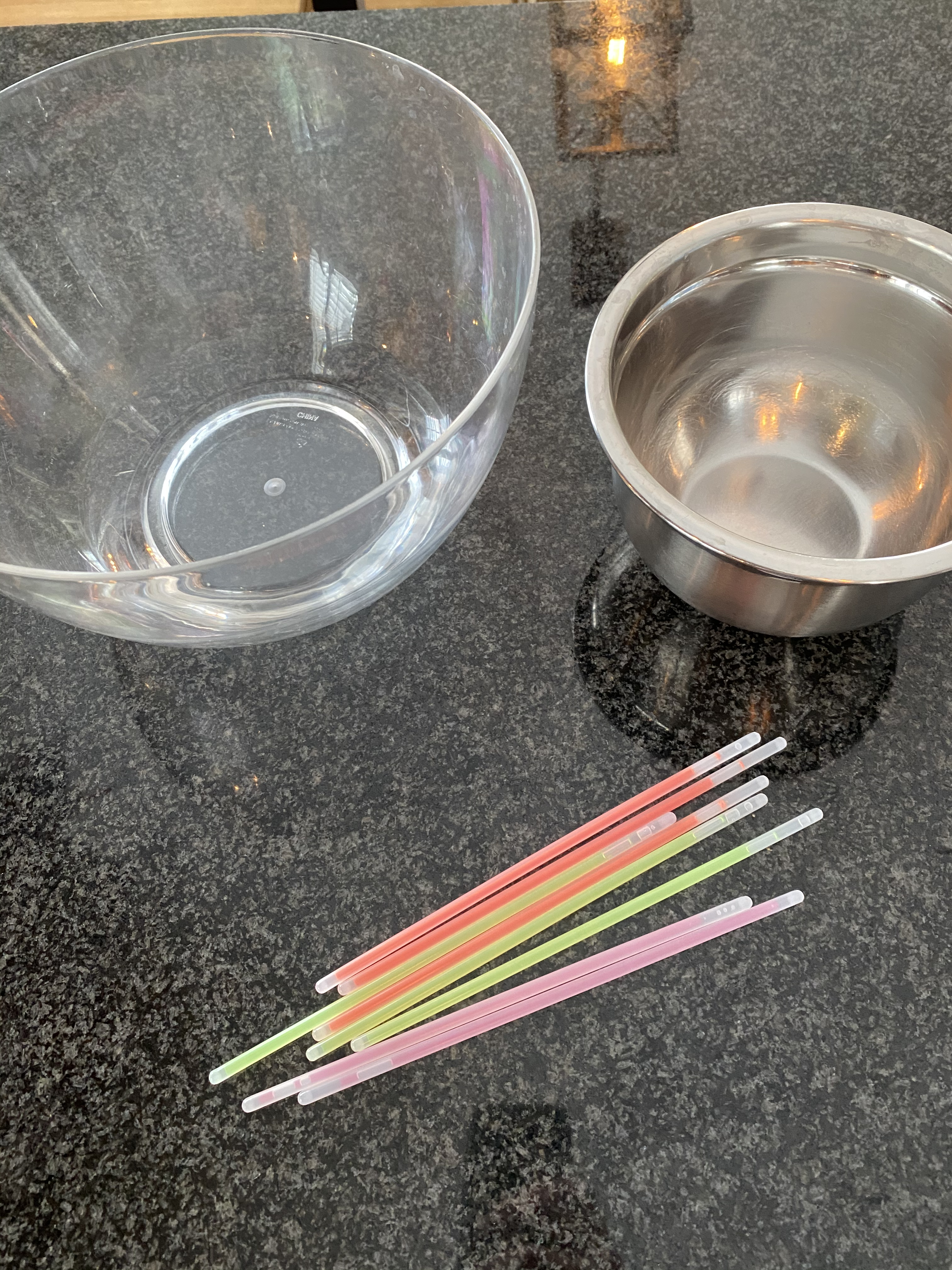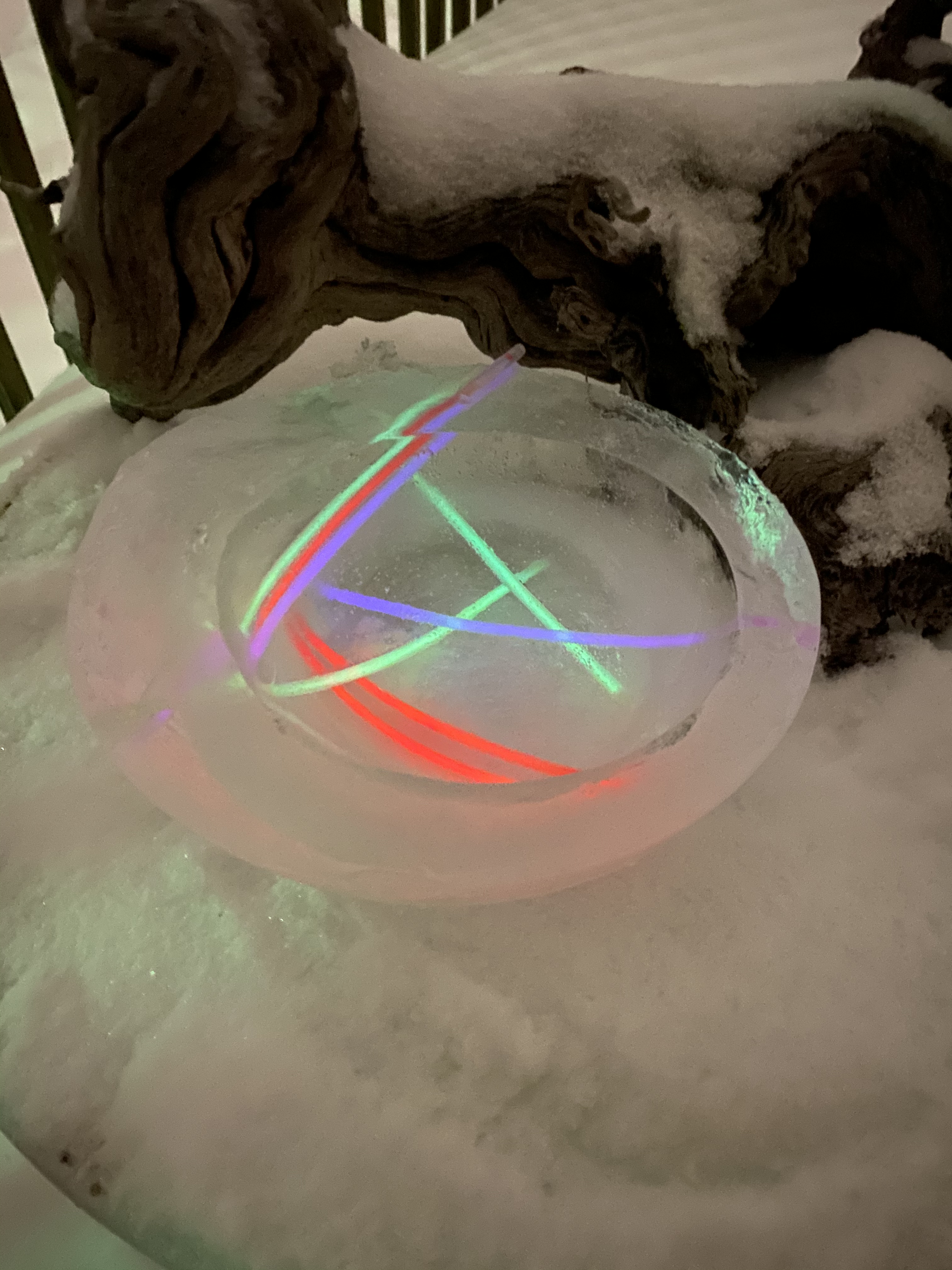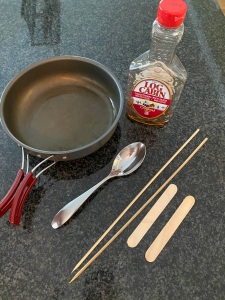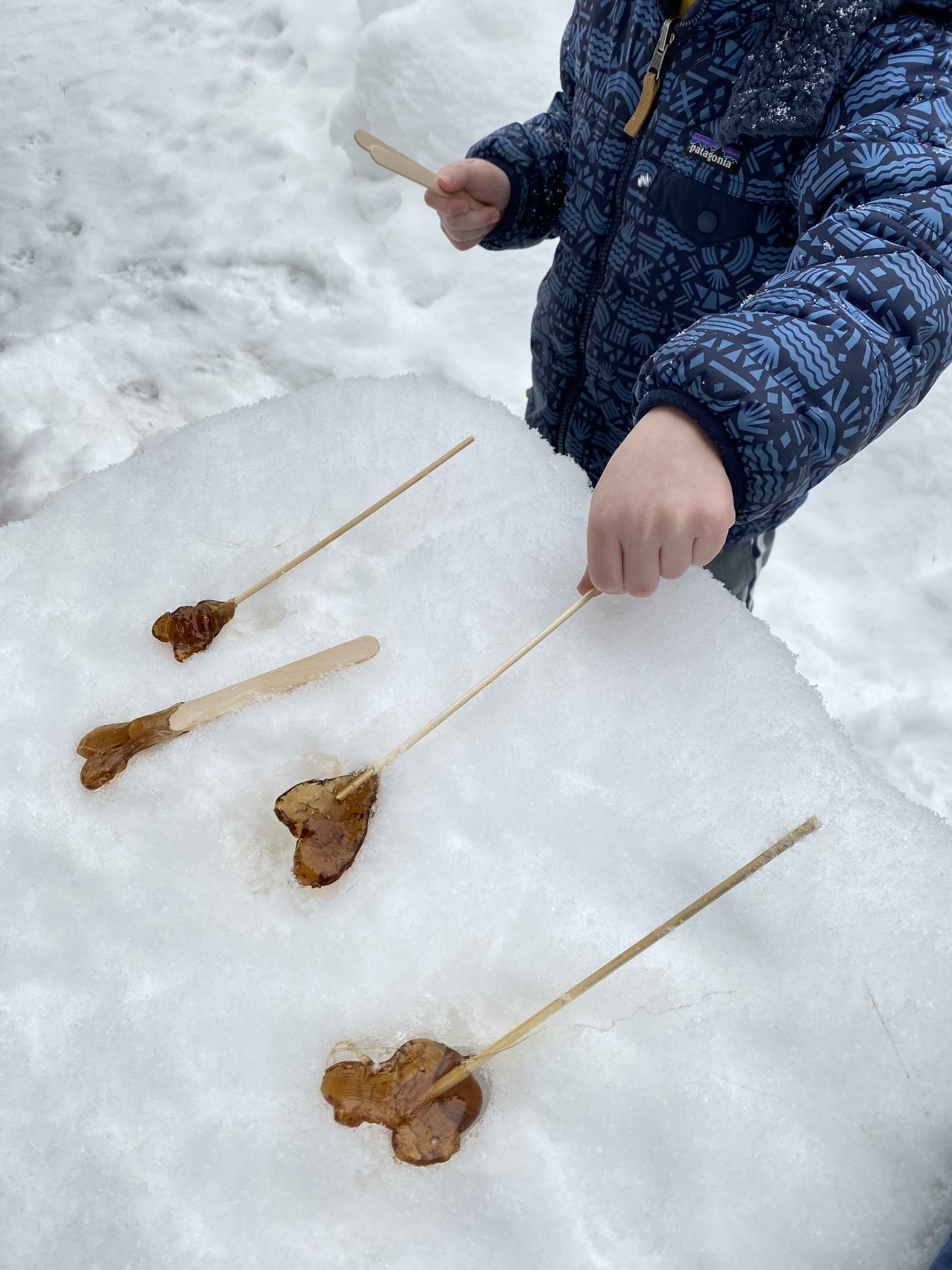We’ve had below freezing temps for weeks in the Chicago area so the boys and I have been experimenting with different ways to freeze ice and objects outside! If it isn’t cold where you live – just use your freezer!
- Frozen Hands: Fill plastic gloves with colored water (or water beads). Attach the gloves with clothespins on a skewer/stick and place so that it hangs into a deep bowl or container. If you lay the glove directly on the ground or table outside you won’t be able to pick it up! Useful tip: Bring them inside to warm up a little it before trying to remove the gloves – if not you’ll break the fingers!
2. Don’t Break my Heart: For Valentine’s Day this year we made beautiful frozen hearts full of nature – and then broke them to pieces with hammers! We used heart shape candy boxes, a heart shaped pan, and even made our own heart to fill out of foil.
3. Ice Bowl: You can fill your bowl with anything but we chose glow sticks for a fun night time reveal. Fill a large bowl with water, add objects you want frozen inside of your bowl (glow sticks, pine cones, legos, etc.). Place a smaller bowl with a heavy object in it to keep it from floating around. Place outside or in freezer until frozen. Makes a great holder for snowballs!!!
4. Frozen Bubbles: This will only work if it’s really cold outside, but the best part is it’s super easy! Try and get a bubble to land on your bubble wand to watch ice crystals form… I learned a few tricks after a couple failed attempts!
Trick #1: Heat up your bubble solution in the microwave before heading outside.
Trick #2: Add a few drops of coloring to make the bubbles easier to see when they land in the snow!


